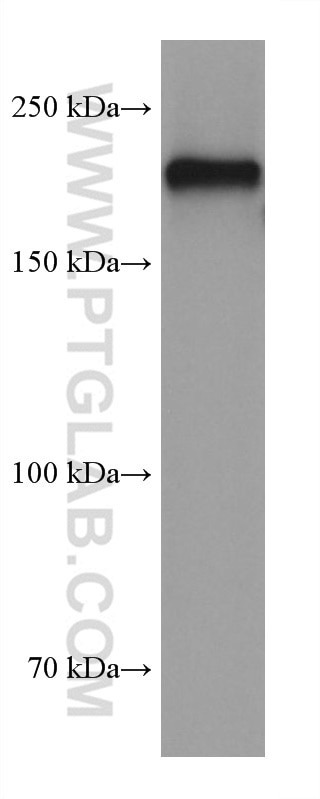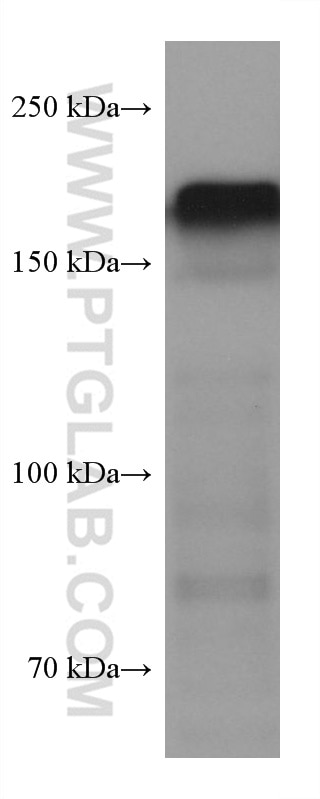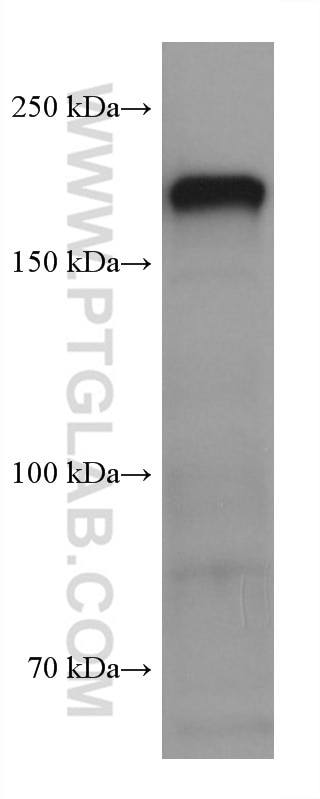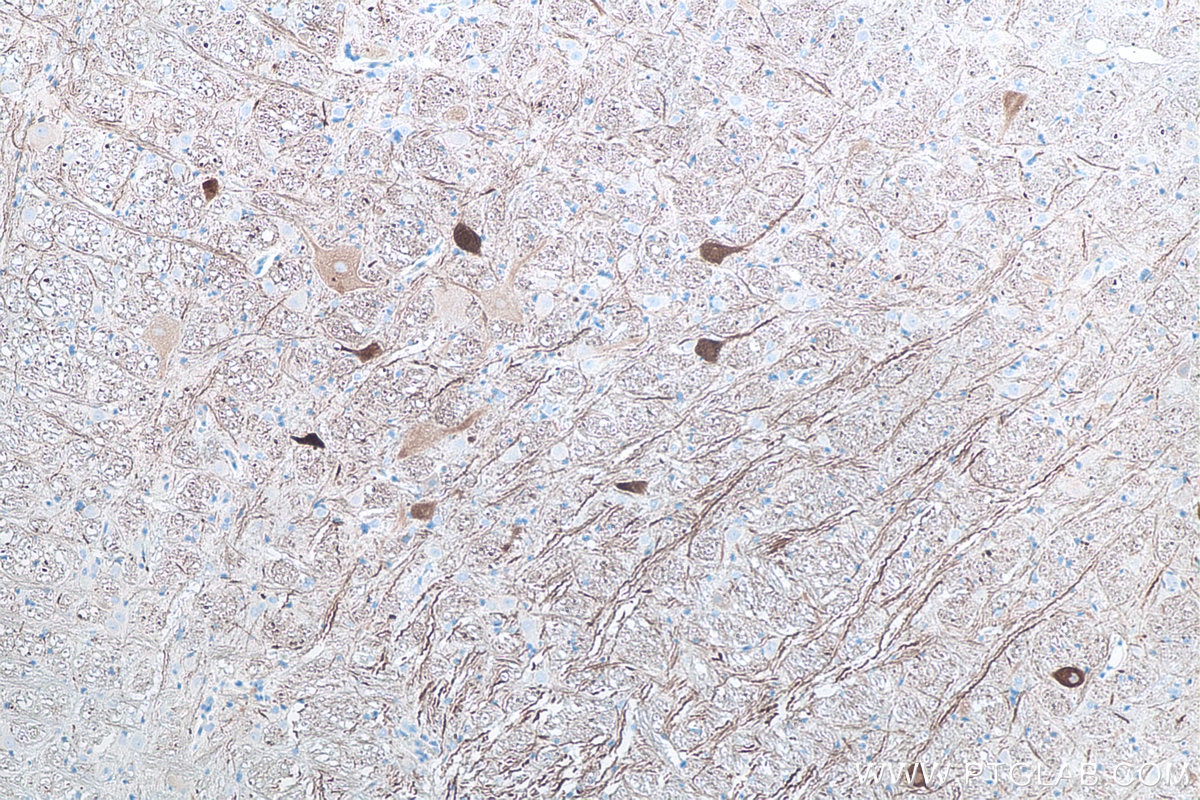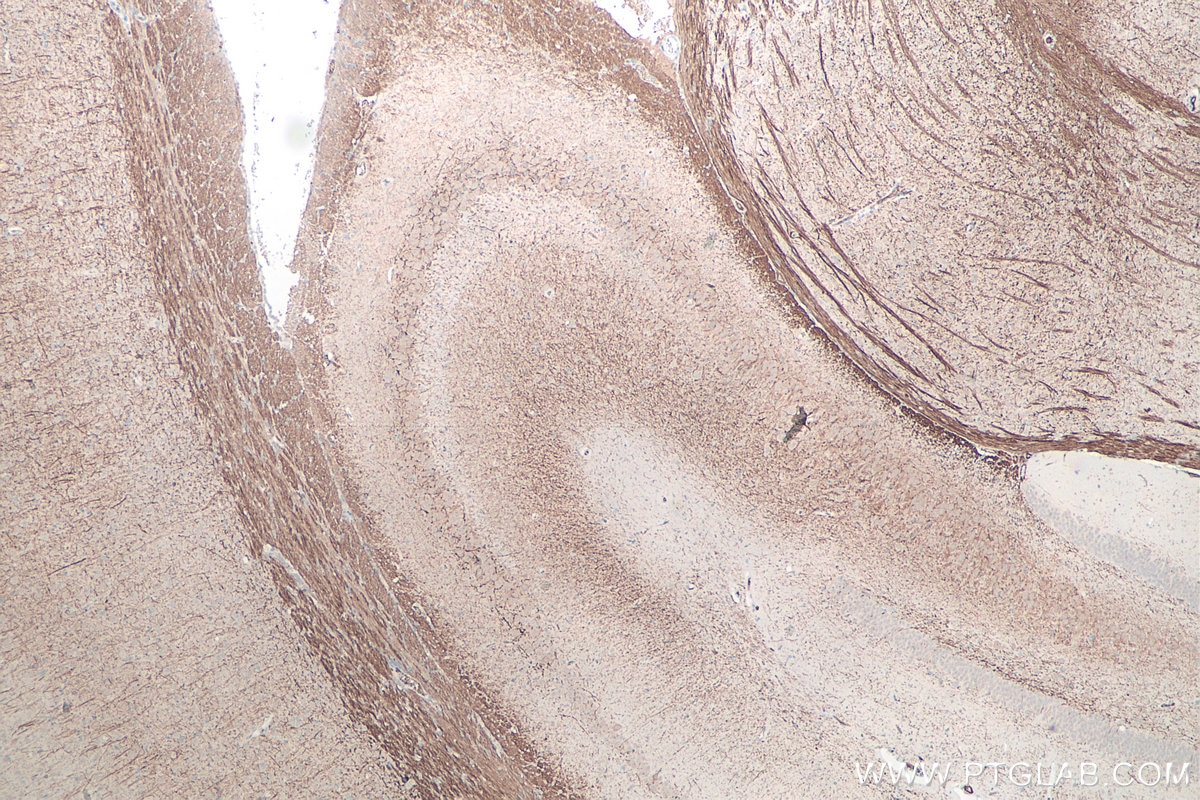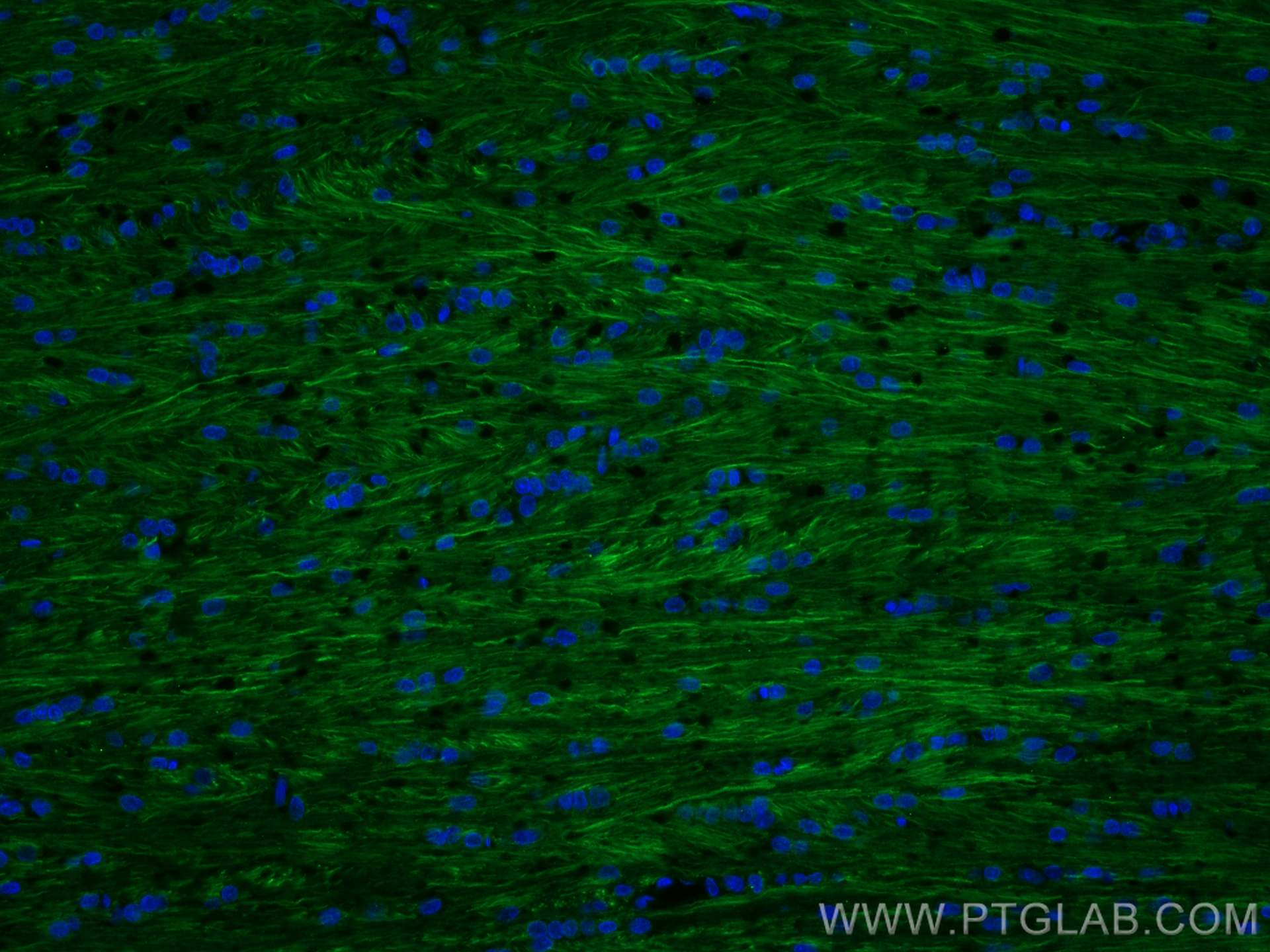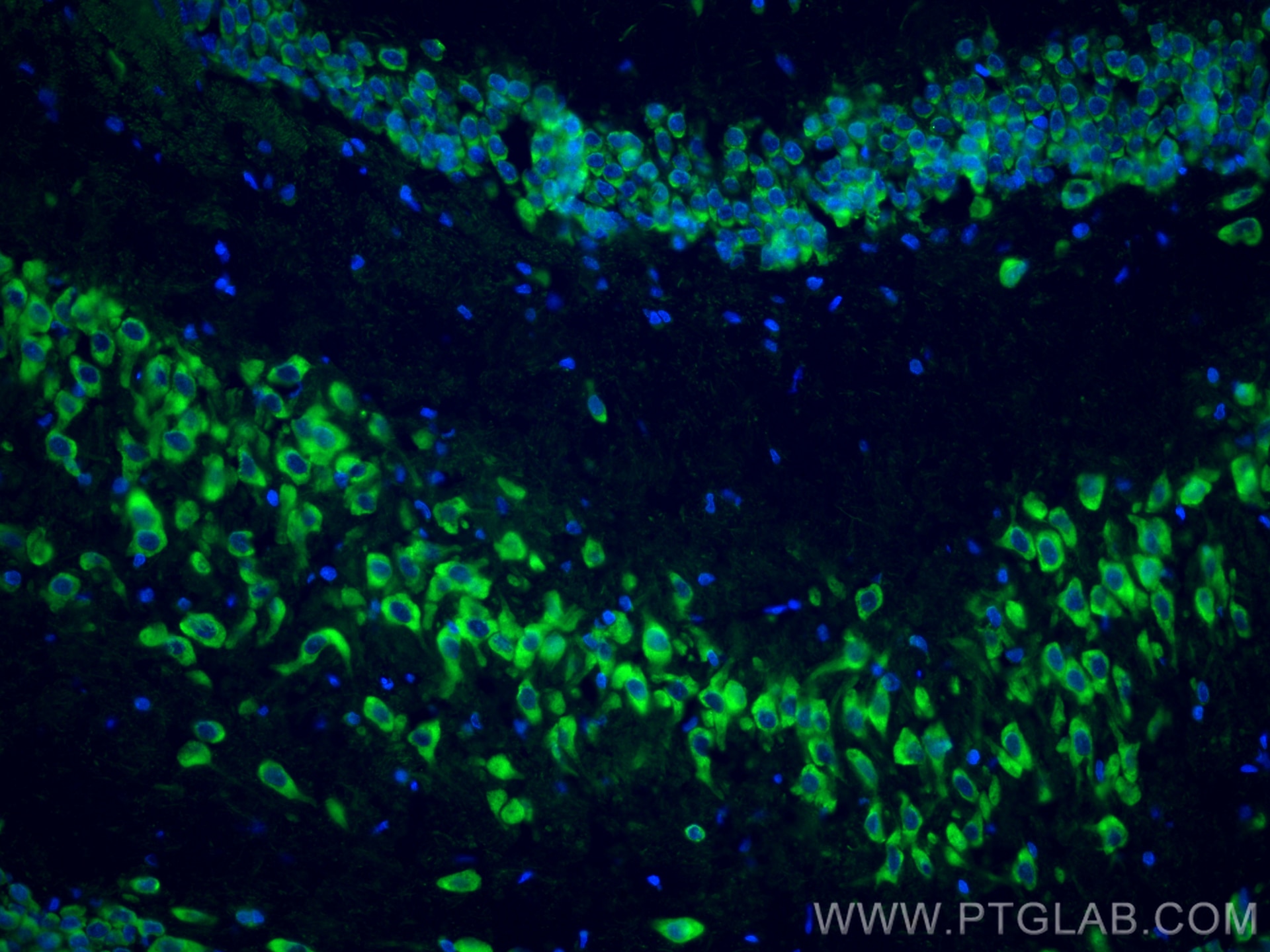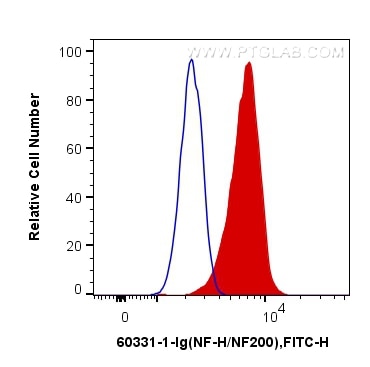Anticorps Monoclonal anti-NF-H/NF200
NF-H/NF200 Monoclonal Antibody for WB, IHC, IF-P, IF-Fro, FC (Intra), ELISA
Hôte / Isotype
Mouse / IgG2a
Réactivité testée
Humain, porc, rat, souris
Applications
WB, IHC, IF-P, IF-Fro, FC (Intra), ELISA
Conjugaison
Non conjugué
CloneNo.
1A3C7
N° de cat : 60331-1-Ig
Synonymes
Galerie de données de validation
Applications testées
| Résultats positifs en WB | tissu de cervelet de porc, tissu cérébral de rat, tissu cérébral de souris |
| Résultats positifs en IHC | tissu de cervelet de rat, tissu cérébral de rat il est suggéré de démasquer l'antigène avec un tampon de TE buffer pH 9.0; (*) À défaut, 'le démasquage de l'antigène peut être 'effectué avec un tampon citrate pH 6,0. |
| Résultats positifs en IF-P | tissu cérébral de rat, |
| Résultats positifs en IF-Fro | tissu cérébral de rat, |
| Résultats positifs en FC (Intra) | cellules SH-SY5Y, |
Dilution recommandée
| Application | Dilution |
|---|---|
| Western Blot (WB) | WB : 1:5000-1:50000 |
| Immunohistochimie (IHC) | IHC : 1:4000-1:16000 |
| Immunofluorescence (IF)-P | IF-P : 1:200-1:800 |
| Immunofluorescence (IF)-FRO | IF-FRO : 1:400-1:1600 |
| Flow Cytometry (FC) (INTRA) | FC (INTRA) : 0.20 ug per 10^6 cells in a 100 µl suspension |
| It is recommended that this reagent should be titrated in each testing system to obtain optimal results. | |
| Sample-dependent, check data in validation data gallery | |
Applications publiées
| WB | See 3 publications below |
| IHC | See 3 publications below |
| IF | See 21 publications below |
Informations sur le produit
60331-1-Ig cible NF-H/NF200 dans les applications de WB, IHC, IF-P, IF-Fro, FC (Intra), ELISA et montre une réactivité avec des échantillons Humain, porc, rat, souris
| Réactivité | Humain, porc, rat, souris |
| Réactivité citée | rat, Humain, souris |
| Hôte / Isotype | Mouse / IgG2a |
| Clonalité | Monoclonal |
| Type | Anticorps |
| Immunogène | NF-H/NF200 Protéine recombinante Ag13517 |
| Nom complet | neurofilament, heavy polypeptide |
| Masse moléculaire calculée | 112 kDa |
| Poids moléculaire observé | 200 kDa |
| Numéro d’acquisition GenBank | BC014185 |
| Symbole du gène | NF-H |
| Identification du gène (NCBI) | 4744 |
| Conjugaison | Non conjugué |
| Forme | Liquide |
| Méthode de purification | Purification par protéine A |
| Tampon de stockage | PBS with 0.02% sodium azide and 50% glycerol |
| Conditions de stockage | Stocker à -20°C. Stable pendant un an après l'expédition. L'aliquotage n'est pas nécessaire pour le stockage à -20oC Les 20ul contiennent 0,1% de BSA. |
Informations générales
NEFH, also named as KIAA0845 and NFH, Belongs to the intermediate filament family. It has an important function in mature axons that is not subserved by the two smaller NF proteins. Neurofilaments are the 10nm intermediate filaments found specifically in neurons. They are a major component of the cell's cytoskeleton, and provide support for normal axonal radial growth. Neurofilaments usually contain three intermediate filament proteins: L, M, and H which are involved in the maintenance of neuronal caliber. The names given to the three major neurofilament subunits are based upon the apparent molecular weight of the mammalian subunits on SDS-PAGE: NF-L, 65-68 kDa; NF-M,145-160 kDa and NF-H, 200-220 kDa. This antibody recognize NEFH only.
Protocole
| Product Specific Protocols | |
|---|---|
| WB protocol for NF-H/NF200 antibody 60331-1-Ig | Download protocol |
| IHC protocol for NF-H/NF200 antibody 60331-1-Ig | Download protocol |
| IF protocol for NF-H/NF200 antibody 60331-1-Ig | Download protocol |
| Standard Protocols | |
|---|---|
| Click here to view our Standard Protocols |
Publications
| Species | Application | Title |
|---|---|---|
Bioact Mater Li-Mg-Si bioceramics provide a dynamic immuno-modulatory and repair-supportive microenvironment for peripheral nerve regeneration | ||
ACS Nano Neutrophil Nanovesicle Protects against Experimental Autoimmune Encephalomyelitis through Enhancing Myelin Clearance by Microglia | ||
Nat Commun Macrophage lineage cells-derived migrasomes activate complement-dependent blood-brain barrier damage in cerebral amyloid angiopathy mouse model | ||
Adv Sci (Weinh) Bone Marrow Mesenchymal Stem Cell-Derived Dermcidin-Containing Migrasomes enhance LC3-Associated Phagocytosis of Pulmonary Macrophages and Protect against Post-Stroke Pneumonia | ||
Biomaterials Oriented nanofibrous P(MMD-co-LA)/Deferoxamine nerve scaffold facilitates peripheral nerve regeneration by regulating macrophage phenotype and revascularization. | ||
J Neuroinflammation Apelin alleviated neuroinflammation and promoted endogenous neural stem cell proliferation and differentiation after spinal cord injury in rats. |
Avis
The reviews below have been submitted by verified Proteintech customers who received an incentive for providing their feedback.
FH Reyes (Verified Customer) (07-02-2024) | This neurofilament antibody worked perfectly showing my neurons in human brain FFPE cortex
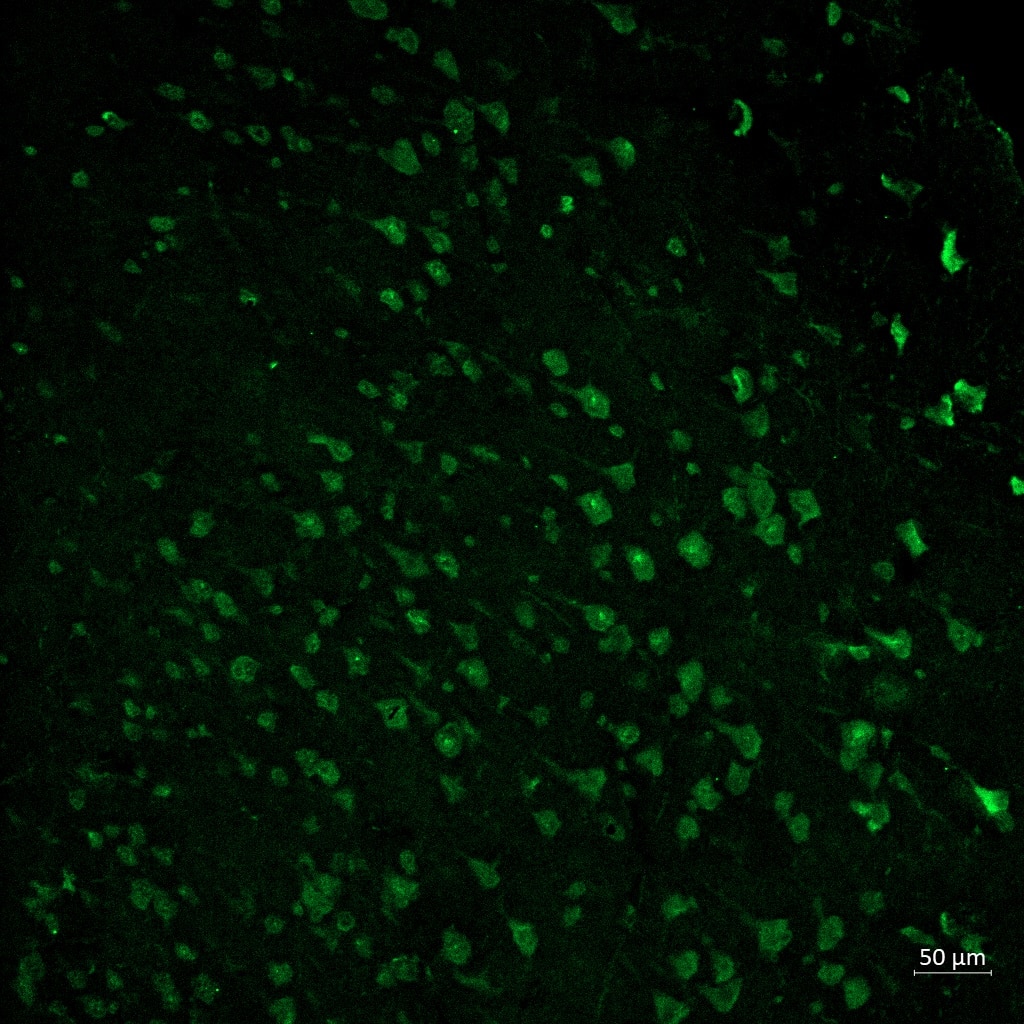 |
